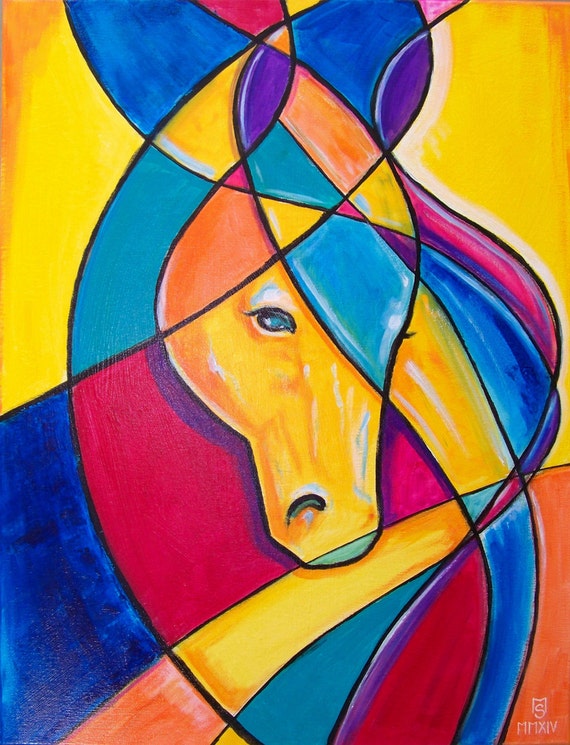

Both the cloth wrapped around her lower body and her body itself are given the same amount of attention as the negative space around them as if all are in the foreground and all are equally important. For instance, the body of the standing woman in the center is composed of angles and sharp edges. Picasso abandoned the Renaissance illusion of three-dimensionality, instead presenting a radically flattened picture plane that is broken up into geometric shards. The unusual formal elements of the painting were also part of its shock value.

Their blatant sexuality was heightened by Picasso's influence from non-Western art that is most evident in the faces of three of the women, which are rendered as mask-like, suggesting that their sexuality is not just aggressive, but also primitive. The subject matter of nude women was not in itself unusual, but the fact that Picasso painted the women as prostitutes in aggressively sexual postures was novel. Picasso's painting was shocking even to his closest artist friends both for its content and for its formal experimentation. These experiments would be taken up by the likes of Piet Mondrian, who continued to explore their use of the grid, abstract system of signs, and shallow space. Cubism paved the way for non-representational art by putting new emphasis on the unity between a depicted scene and the surface of the canvas.Their use of newspaper would lead later historians to argue that, instead of being concerned above all with form, the artists were also acutely aware of current events, particularly World War I. In the second phase of Cubism, Synthetic Cubism practicioners explored the use of non-art materials as abstract signs.This first phase of the movement was called Analytic Cubism.

Some historians have argued that these innovations represent a response to the changing experience of space, movement, and time in the modern world.


 0 kommentar(er)
0 kommentar(er)
